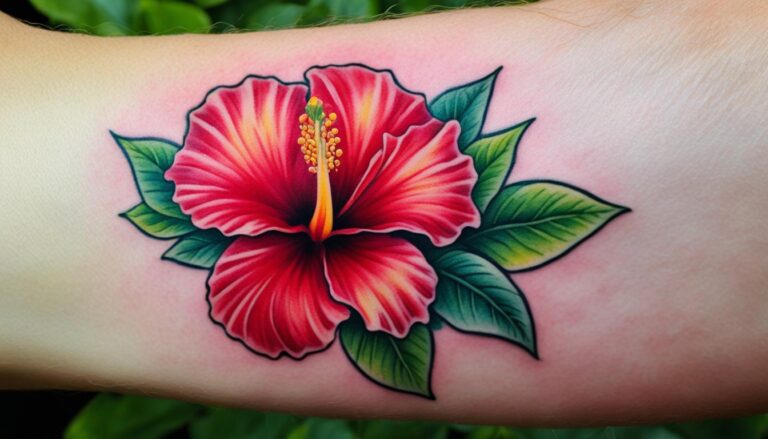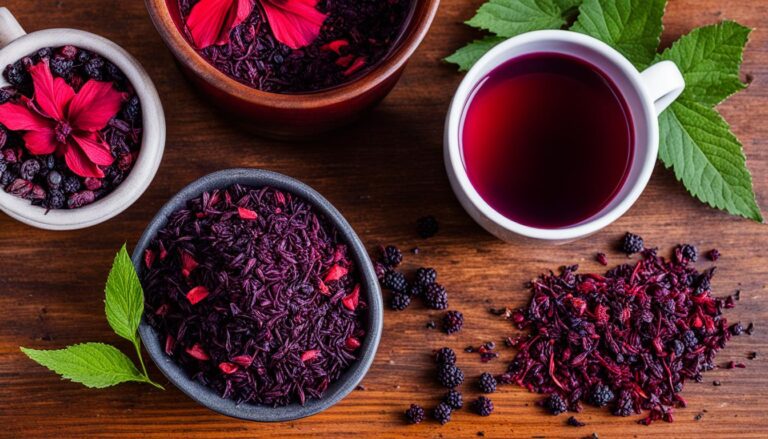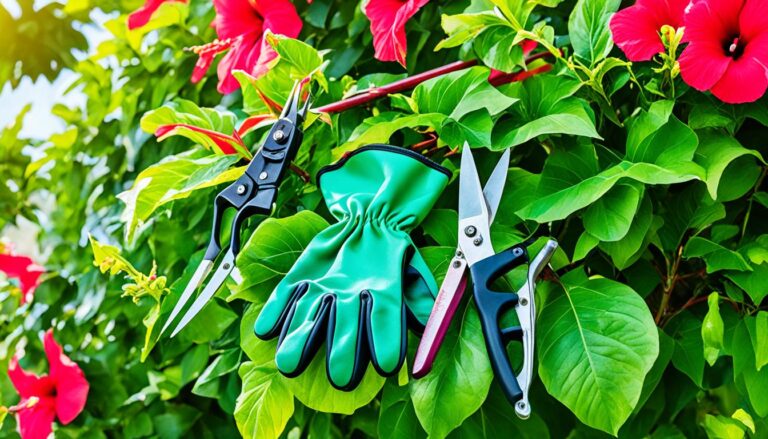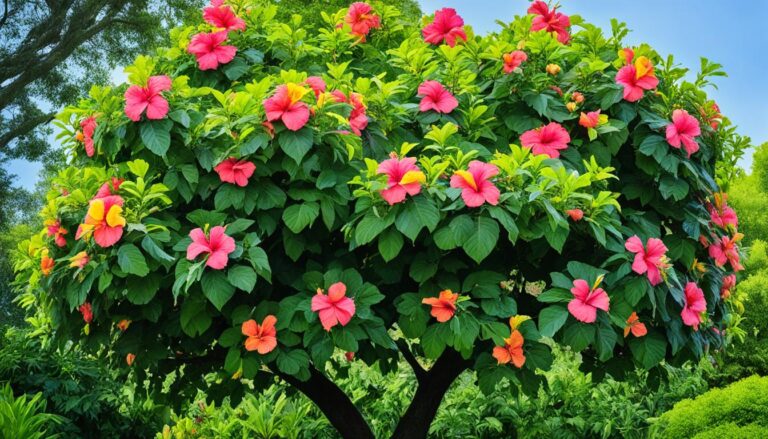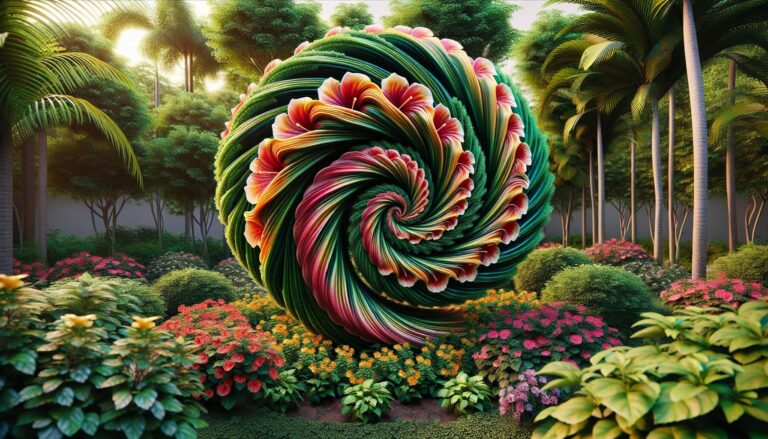Edible Hibiscus: Vibrant Flowers for Tasty, Healthy Dishes and Drinks
Have you ever considered adding a splash of vibrant color and tangy flavor to your meals? Enter edible hibiscus, a versatile plant that’s taking the culinary world by storm. I’ve been experimenting with this beautiful flower in my kitchen, and I’m excited to share its potential with you.
Hibiscus isn’t just a pretty face in the garden; it’s packed with nutrients and offers a unique taste profile. From teas to salads, and even main courses, this flower can transform ordinary dishes into extraordinary culinary experiences. But what parts of the hibiscus are edible, and how can you incorporate them into your cooking? I’ll explore these questions and more, helping you unlock the delicious potential of this often-overlooked ingredient.
What Is Edible Hibiscus?
Edible hibiscus refers to specific varieties of the Hibiscus plant that are safe for human consumption. These flowers offer a unique blend of visual appeal and culinary versatility, making them popular in various cuisines worldwide.
Common Varieties of Edible Hibiscus
Several hibiscus varieties are prized for their edible qualities:
- Hibiscus sabdariffa (Roselle):
- Bright red calyces
- Tart, cranberry-like flavor
- Used in teas, jams, and sauces
- Hibiscus rosa-sinensis (Chinese Hibiscus):
- Large, showy flowers
- Mild, slightly acidic taste
- Often used in salads or as garnishes
- Hibiscus syriacus (Rose of Sharon):
- Small, delicate flowers
- Subtle, lettuce-like flavor
- Commonly added to fresh salads
- Hibiscus acetosella (Cranberry Hibiscus):
- Deep red leaves and flowers
- Tangy, lemony taste
- Popular in stir-fries and as a colorful garnish
- Hibiscus cannabinus (Kenaf):
- Green, star-shaped leaves
- Mild, slightly bitter flavor
- Used in soups and stews
These varieties offer a range of flavors and textures, making them versatile ingredients in the kitchen. I’ve found that experimenting with different types can add exciting dimensions to dishes.
Nutritional Benefits of Edible Hibiscus
Edible hibiscus packs a powerful nutritional punch. It’s rich in vitamin C, supporting immune function and skin health. A single serving provides up to 40% of the daily recommended intake.
Hibiscus flowers contain antioxidants like anthocyanins and polyphenols. These compounds fight free radicals, potentially reducing the risk of chronic diseases.
| Nutrient | Amount per 100g |
|---|---|
| Vitamin C | 14.0 mg |
| Calcium | 215 mg |
| Iron | 1.48 mg |
| Fiber | 2.5 g |
The calyx of Hibiscus sabdariffa is particularly nutrient-dense. It’s low in calories but high in minerals like calcium and iron. This makes it an excellent choice for those watching their weight or seeking to boost their mineral intake.
Hibiscus tea, a popular preparation, may help lower blood pressure. Studies show regular consumption can lead to modest reductions in both systolic and diastolic blood pressure.
The flowers’ high pectin content aids digestion and promotes gut health. They’re also a good source of organic acids, which give hibiscus its characteristic tart flavor and contribute to its potential health benefits.
I’ve found incorporating hibiscus into my diet has been a delightful way to boost my nutrient intake. Its versatility allows for easy integration into various dishes and drinks, making it a fun and healthful addition to any meal plan.
Culinary Uses for Edible Hibiscus
Edible hibiscus offers a world of culinary possibilities, from refreshing beverages to tangy preserves. Its vibrant color and unique flavor profile make it a versatile ingredient in various dishes and drinks.
Beverages and Teas
Hibiscus tea is a popular and refreshing drink enjoyed hot or cold. To make it:
- Steep dried hibiscus flowers in hot water for 5-10 minutes
- Strain and sweeten to taste
- Serve over ice for a cool summer beverage
For a twist, try:
- Hibiscus lemonade: Mix hibiscus tea with fresh lemon juice and sugar
- Hibiscus cocktails: Add to margaritas or mojitos for a floral kick
- Hibiscus smoothies: Blend with fruits like strawberries or mangoes
Salads and Garnishes
Fresh hibiscus petals add a pop of color and tart flavor to salads and dishes:
- Toss in green salads for a vibrant touch
- Use as a garnish for desserts or cocktails
- Stuff with cheese for a unique appetizer
Candied hibiscus flowers make elegant cake decorations:
- Dip petals in egg white
- Coat with fine sugar
- Dry on parchment paper
Jams and Preserves
Hibiscus jams and preserves capture the flower’s tangy essence:
- Simmer hibiscus calyces with sugar and pectin
- Cook until thickened
- Can in sterilized jars
- Spread on toast or scones
- Swirl into yogurt
- Use as a glaze for meats
| Preserve Type | Sugar Ratio | Cooking Time |
|---|---|---|
| Jam | 1:1 | 20-30 mins |
| Jelly | 2:1 | 30-40 mins |
| Syrup | 3:1 | 10-15 mins |
Growing Edible Hibiscus at Home
Growing edible hibiscus at home is a rewarding experience that yields beautiful flowers and flavorful ingredients. With the right conditions and care, you can cultivate these vibrant plants in your garden or even in containers.
Climate and Soil Requirements
Edible hibiscus thrives in warm, tropical climates. These plants prefer:
- Full sun exposure (6-8 hours daily)
- USDA hardiness zones 8-11
- Well-draining, slightly acidic soil (pH 6.0-6.8)
- Protection from strong winds
In cooler regions, grow hibiscus in containers and move them indoors during winter. For optimal growth:
- Use a loamy soil mix with organic matter
- Ensure good drainage to prevent root rot
- Maintain soil moisture without waterlogging
Planting and Care Tips
To successfully grow edible hibiscus:
- Plant in spring after the last frost
- Space plants 3-6 feet apart
- Water deeply and regularly, especially during flowering
- Fertilize monthly with a balanced, water-soluble fertilizer
- Prune in late winter or early spring to promote bushiness
| Care Aspect | Frequency | Notes |
|---|---|---|
| Watering | 2-3 times/week | Adjust based on rainfall |
| Fertilizing | Monthly | Use 10-10-10 NPK ratio |
| Pruning | Annually | Remove dead or crossing branches |
For container growing:
- Choose a pot at least 12 inches deep
- Use a high-quality potting mix
- Repot every 2-3 years to refresh soil
Pest control:
- Monitor for aphids, whiteflies, and spider mites
- Use neem oil or insecticidal soap for organic control
- Remove affected leaves promptly
By following these tips, you’ll be on your way to growing lush, productive edible hibiscus plants at home.
Harvesting and Storing Edible Hibiscus
Harvesting Techniques
Harvesting edible hibiscus is a breeze when you know the right techniques. I’ve found that timing is crucial for the best flavor and texture. Here’s how to nail it:
- Pick flowers in the morning after dew has evaporated
- Choose fully opened blooms for immediate use
- Select unopened buds for longer storage
- Gently twist and pull flowers from the stem
- Use clean, sharp scissors for a clean cut if needed
Remember, regular harvesting encourages more blooms, so don’t be shy about picking!
Optimal Harvest Times
Timing your harvest right can make all the difference. Here’s a quick guide:
| Plant Part | Best Harvest Time |
|---|---|
| Flowers | Early morning |
| Leaves | Mid-morning |
| Calyces | 2-3 weeks after flowering |
For calyces, wait until they’re plump and juicy. They’ll be at their tangy best and perfect for teas and jams.
Proper Storage Methods
Once you’ve harvested your hibiscus bounty, proper storage is key to maintaining freshness. Here are some tried-and-true methods:
- Fresh flowers:
- Wrap in damp paper towels
- Place in a perforated plastic bag
- Store in the refrigerator for up to 3 days
- Leaves:
- Rinse and pat dry
- Store in an airtight container with a damp paper towel
- Keep in the crisper drawer for up to a week
- Dried calyces:
- Air dry in a well-ventilated area
- Store in airtight containers away from light
- Can last up to a year when properly dried and stored
By following these storage tips, you’ll have a steady supply of edible hibiscus for your culinary adventures.
Preserving Methods
Want to enjoy your hibiscus harvest year-round? Try these preservation techniques:
- Freezing:
- Wash and dry flowers or calyces
- Spread on a baking sheet and freeze
- Transfer to freezer bags for long-term storage
- Drying:
- Use a food dehydrator or hang in bunches
- Store in airtight containers when completely dry
- Candying:
- Dip flowers in egg white, then sugar
- Let dry on parchment paper
- Store in airtight containers with parchment between layers
These methods let you savor the taste of summer even in the depths of winter.
Potential Health Benefits of Edible Hibiscus
Edible hibiscus offers a range of potential health benefits that make it a valuable addition to any diet. Here are some of the key advantages:
- Rich in antioxidants:
- Packed with polyphenols and flavonoids
- Helps combat free radicals in the body
- May reduce oxidative stress
- Heart health support:
- Studies suggest it may lower blood pressure
- Potentially reduces bad cholesterol levels
- Supports overall cardiovascular function
- Anti-inflammatory properties:
- Contains compounds that may reduce inflammation
- Could help manage chronic inflammatory conditions
- Digestive health:
- High fiber content aids digestion
- May promote gut health and regularity
- Weight management:
- Low in calories
- Natural diuretic properties
- May boost metabolism
- Immune system support:
- High vitamin C content
- Enhances the body’s natural defense mechanisms
- Potential anti-cancer properties:
- Some studies suggest hibiscus extracts may inhibit cancer cell growth
- More research is needed in this area
| Nutrient | Amount per 100g |
|---|---|
| Vitamin C | 14mg |
| Calcium | 215mg |
| Iron | 1.48mg |
| Magnesium | 51mg |
I’ve found that incorporating hibiscus into my diet has improved my overall well-being. It’s a versatile plant that can be enjoyed as a tea, added to salads, or used in various culinary creations. Remember, while these benefits are promising, it’s always best to consult with a healthcare professional before using hibiscus for medicinal purposes.
Conclusion
Edible hibiscus is a remarkable plant that offers a world of culinary possibilities and potential health benefits. From its vibrant colors to its tangy flavors it’s a versatile ingredient that can elevate both dishes and drinks. Whether you’re growing it at home or purchasing it I encourage you to explore the many ways to incorporate this beautiful flower into your diet. Remember to enjoy it in moderation and consult with a healthcare professional if you’re considering using it for medicinal purposes. With its rich nutritional profile and delightful taste edible hibiscus is truly a botanical treasure worth savoring.


